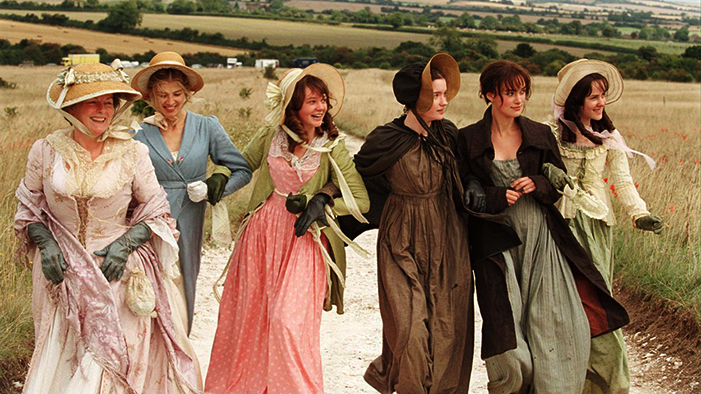Larson switches to Holmes’ history. Herman Webster Mudgett is his given name, and he grew up in New Hampshire in a strictly religious household. He graduated school at sixteen and became a teacher, where he met Clara A. Lovering. Holmes married her in 1878, but abandoned her shortly thereafter. In medical school, he planned with a friend to burn cadavers to fake deaths and collect insurance. Mudgett claimed that he “acquired his ‘portion’” of the material, but ultimately thought the plan too risky. He sprung between jobs until moving to Chicago in 1886, where he changes his name to Holmes.
Summary: Chapter 4: “Becomingness”
The Fair’s board of directors cannot decide where in Chicago to put the Fair. In frustration, one of the directors, James Ellsworth, secretly asks Frederick Law Olmsted, a prominent architect, and Olmsted’s protégé, Harry Codman, to evaluate the potential sites. Olmsted recommends building in Jackson’s Park to take advantage of Lake Michigan’s natural beauty. The board continues to delay, putting the architects in an ever worsening time crunch.
Larson introduces a young Irish immigrant named Patrick Prendergast, who is a steadfast supporter of former Mayor Carter Henry Harrison. Harrison is running for office again, and Prendergast doggedly campaigns for him. He has a delusion that when elected, Harrison will reward him with a job.
In October of 1890, news comes that a global recession is approaching. Panic ensues. The Fair authorities worry that producing and attracting attendance at a World’s Fair mid-recession will be extremely challenging. The board formally appoints Burnham chief of construction. Burnham names Root as supervising architect and Olmsted as supervising landscape architect.
Analysis: Chapters 1-4
The first chapter of The Devil in the White City introduces Chicago as a dark city, literally and morally, so that we understand how easy it was for someone to get lost without anybody noticing. As one would expect, an increase in industry also meant an increase in population and literal dirtiness. Factories produced smoke and steam, and filthiness prompted disease. Chicago was sexually seedy and morally loose. As new modes of transportation increased. so did fatal accidents. Police had their hands full with a rising death rate, and a person who disappeared was not usually at the top of the list. Women moved to Chicago from all over the nation. At a time when women were often pigeonholed into a specified role in the domestic sphere, the urge to live independently and develop a career was alluring. Chicago offered seemingly endless jobs, as the burgeoning companies had a greater need for receptionists and seamstresses. Women coming from small, safe towns to live alone for the first time likely did not believe how dangerous the big city could be.
This general grimy and smoky quality of the city also tells us why the people of Chicago jumped at the chance to host the World’s Fair. The citizens were proud of their industry and architectural achievement, but they were tired of being the “backwater” of America. Chicago desperately wanted a chance to show other cities—especially East Coast places like New York—and the whole world that it could be sophisticated and refined. Everyone in the city was invested in the vote, united and spell-cast, waiting for the news. It is ironic that Chicago was brought together by such an event, to the point of even stopping in the streets and gathering outside the Tribune offices, and yet Chicago was also a city where anyone could easily disappear.
Against the backdrop of the Fair ballot-casting, Larson fills us in on Burnham’s background. We learn his main insecurity: he was rejected from Harvard and Yale and never received formal architectural training. This insecurity pushes him to prove himself, and he is willing to take risks to be a great architect. Despite his tunnel-vision ambition, Burnham is ultimately a good man. Burnham and Root’s office is “light-filled,” which symbolizes Burnham’s innate goodness. Larson foreshadows the contrast between Holmes’ attraction to darkness and Burnham’s attraction to light.
By the end of the second chapter, we see that Burnham and Root’s innovation and teamwork make their firm the best choice to design the Fair. Root’s innovation of the floating foundation makes an instant name for their firm; this invention is a big breakthrough for architecture because it enables taller buildings. The other game changers – elevators, plate glass, and load-bearing frames – come just in time for the Fair. Burnham & Root is poised to rise to the task of the construction. In the fourth chapter, however, we learn that the odds are against the Fair from the start. The directors cannot decide where to put the Fair for the first six months. While Chicago was united in attaining the grant for the Fair in the first place, now that same pride divides it.
The third chapter introduces Holmes as a manipulator who is drawn to the perverse. Our first clue to his perverseness is that he is impressed by Chicago’s stink. This is a stench of “rotten peaches, horse excrement, and anthracite.” Most people would be repulsed at the reek, but Holmes is drawn to it, suggesting that something in his character finds rottenness attractive. He is also attracted to the undeveloped lot across from the Holton drugstore, and to Mrs. Holton’s vulnerability. The way a different man might be attracted to a pleasurable scent, Holmes is attracted to vulnerability because this is an attribute he can use to manipulate a person. He senses this vulnerability even before Mrs. Holton reveals that her husband is dying. When Larson writes about how strange it is that nobody sees Mrs. Holton after Holmes buys the drugstore, he insinuates that Holmes killed her.


 payment page
payment page



